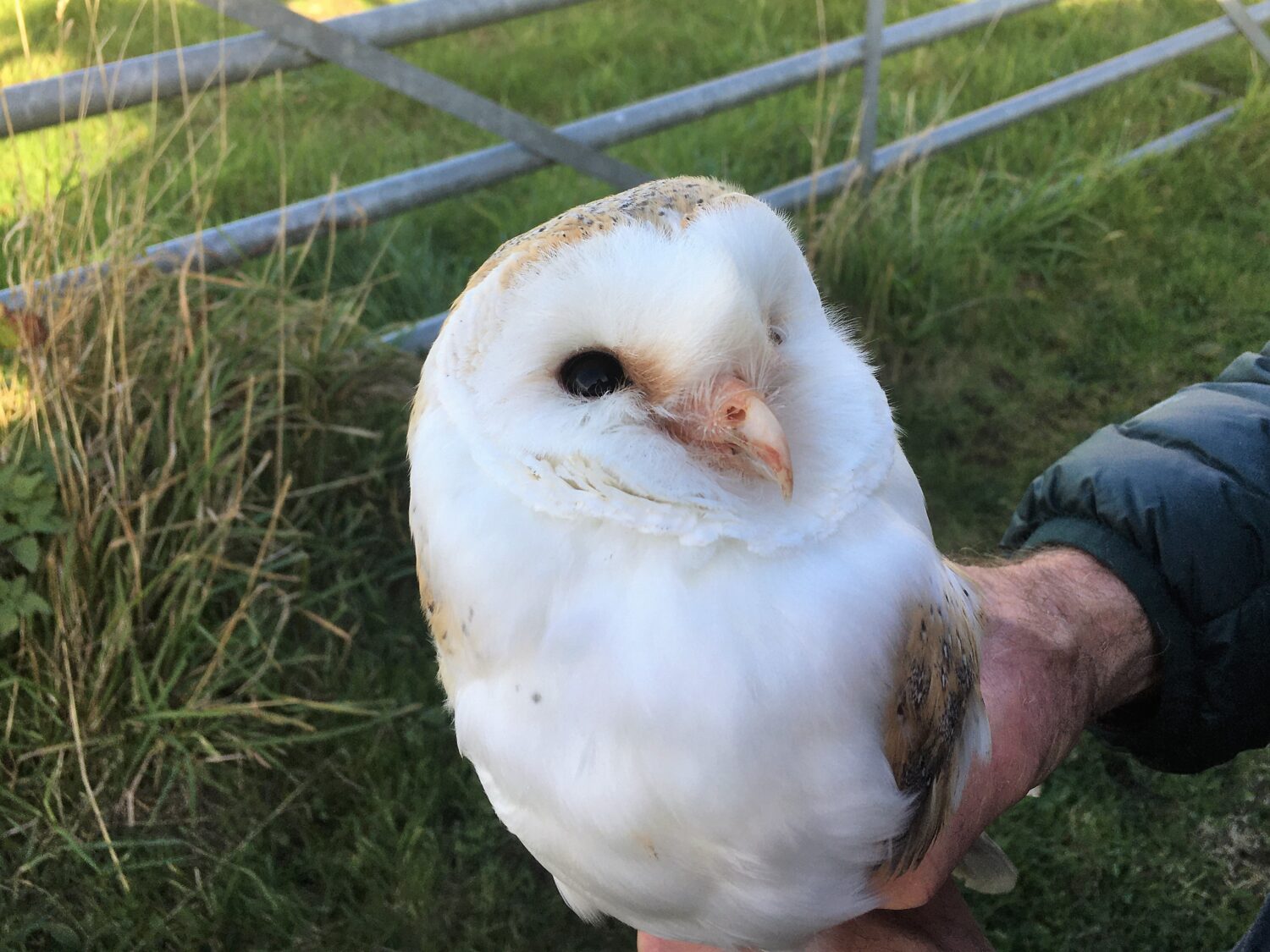North East ornithologist, Phil Hanmer, shares a new update summarising bird ringing across Northumberland throughout November. He also shares a Barn Owl breeding summary.
Ringing at Howick
Our last ringing session at Howick was on the 4 November where we caught 40 birds. There were 24 new and 16 retraps. All migrant warblers seemed to have moved on from the area but due to the presence of lots of juicy berries the Arboretum the site was being plundered by lots of Blackbirds and Bullfinches. It is highly likely that many of the Blackbirds were continental in origin but its very difficult to identify these as distinct from the more sedentary residents. It is generally believed that continental birds have ‘blacker’ smudgy beaks but so do juvenile residents. As well as processing nine blackbirds there was also a Mistle Thrush which was most likely a migrant. We also caught a female Sparrowhawk in the act of trying to predate a blackbird! Handling this sharp beaked and taloned bird was an interesting experience for one of my trainees but he survived the experience uninjured.
The need to repair and clean-out some barn owl boxes north of Wooler led to the locating of a male Barn Owl which proved to be [GY65453]. This bird was first ringed in 2017 when it raised three young. In 2018 it raised another three. It had a new mate in 2019 but did not nest and in 2020 they did not breed unless it was at another site. He did breed in 2021, only raising one young. The pattern of feathers in his wing would suggests he was only four or possibly five years old, but ringing tells us he is at least six. At another box, we had a surprise when a Tawny Owl came out! This was a new bird, an adult, probably four plus years old. It’s possible that this male may remain to this box to nest in the spring although Tawny Owls often prefer a location which is a bit darker and more secluded.


Barn Owl Breeding Season 2022
In response to requests for a fuller update on this year’s Barn Owl Nesting I have attached my summary table of this year’s results.
My study of around 100 sites in North Northumberland, outside of the national park, indicates that this was a much better year than 2021, although not as good as 2020. At 39% occupancy it was above the long-term average of 30%; although only 34 were successful at raising young. The exceptionally stormy weather of the winter may have disrupted some nest sites and pairs. We recorded three instances in the spring when pairs seemed to have changed partners during the early stages of nesting and we did lose some sites. The weather did eventually become calmer, and most eggs were laid in April and May.
As the summer moved on it became hot and dry. This initially seemed to encourage some late broods. Of five which could be said to fall into this category, only three were successful with young being ringed in August. This can probably be explained by the exceptionally dry weather in August suppressing the numbers of small mammals. One of the late nests, near Longhorsley, was a replacement brood. The pair originally had three eggs in May but for reasons that we can’t understand stopped incubating these and laid six more in June. They raised four at the end of August from these. Another of the successful late broods was raised by a male who occupied a nest site all year. His mate died early in the year, but he continued to occupy the site and eventually attracted a new mate towards the end of June. We were able to ring four young at the end of August.
The average number of eggs laid per clutch was up at 4.4 although four ‘6’s’ were recorded. The average number of owlets fledged was 2.9 although three pairs did raise six. A total of 107 owlets were ringed and apparently fledged. 32 new adult Barn Owls were ringed and 28 re-trapped/controlled. This was including a pair that seems to always nest early near Bamburgh and another that was evicted from their usual box by Tawny Owls but went onto to use the Tawny Owl’s own box instead.
As well as damage and disruption caused by the winter storms Jackdaws were still a problem occupying owl nest sites. The attempt of this species to bury owl eggs under ‘Jackdaw sticks’ was again observed. Kestrels were exceptionally thin on the ground with only one pair using an owl box, although they were seen around two other sites.
Tawny Owls did takeover one Barn Owl box and turned up in some slightly odd sites, probably the result of losing nest sites to the winter storms. However, they had a successful nesting year and they did compete with our rare breeding Goldeneye ducks for nest sites.
Successful Barn Owl nests were near: Whittingham, Doddington, Wooler, Alnwick, Allerdean, Fallowdon, Newton, Bamburgh, Craster, Bilton, Warkworth, Rothbury, Coltpark, Netherwitton, Longhorsley and Longframlington.
Thanks are due to all those who have helped with this project and to those that have donated money for the making of boxes.